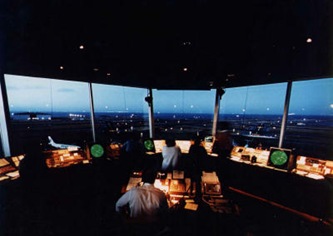We have recently written about the rash of sleeping air traffic controller incidents in the USA. Hence, its well worth mentioning that Langhorne Bond, an FAA administrator from 1977 to 1981, and Robert W. Poole Jr., a director of transportation policy at the Reason Foundation, have co-written an interesting opinion piece for the Wall Street Journal about why they believe air traffic controllers in the USA are falling asleep when they in fact have the last word on their work schedules.
The pair wrote that the most popular air traffic controller shift is called 2-2-1 where air traffic controllers work two swing shifts, then two day shifts and finally one midnight shift. The second day shifts will end at 2 pm while the subsequent midnight shift will begin later in the evening at 10 pm – a mere eight hours later. This type of schedule obviously disrupts circadian rhythms and creates fatigue for those on the midnight shift. Moreover, the authors noted that:
Within air traffic circles, this problem is so well-known that 2-2-1 has long been called "the rattler," since it can come back and bite the controller, degrading his performance. But controllers and their union have fought to keep 2-2-1 because it gives them a three-day weekend afterwards.
Nevertheless, the National Transportation Safety Board (NTSB) has called for abolishing 2-2-1 as far back as an April 2007 report while the inspector general for the Department of Transportation wants a 10-hour minimum between shifts plus 16 hours after any midnight shift.
The authors then pointed out that another major cause of fatigue on midnight shifts in the USA are the black backgrounds on controller display screens. This means that a dark room is needed for better visibility but this also induces drowsiness on late night shifts.
Hence, it is now common international practice outside of the USA to have light gray background screen displays since these types of screens can be used in high-light environments. However and in the USA, this trend has been all but ignored.
Moreover and over the past 15 years, nearly every developed country (except for the US) has separated air safety regulation from the provision of air traffic control services to be consistent with the policies set forth by the International Civil Aviation Organization. By doing this, there is an arm’s-length safety regulation of air traffic control itself.
Hence, the authors ended their piece by calling for this separation and by stating that the current controller-fatigue flap is a wake-up call to do so.

Leave a Reply